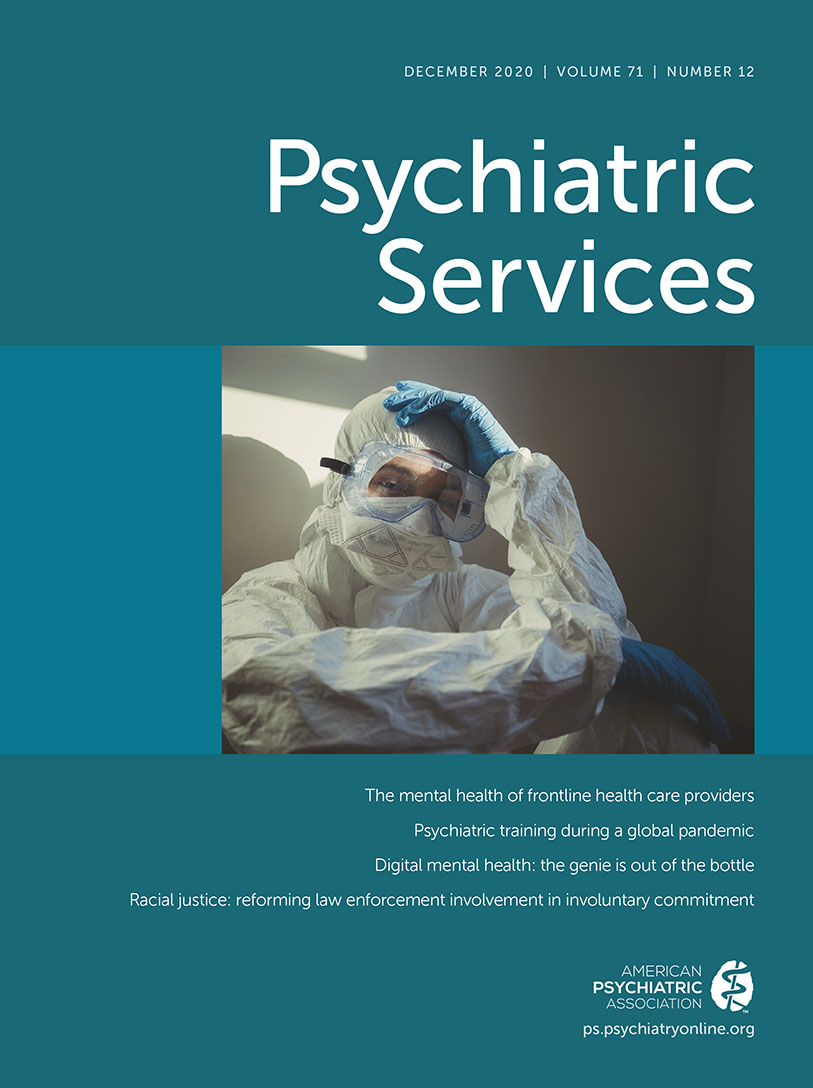Nationally Advancing Quality Improvement in Restraint and Seclusion Measures
TO THE EDITOR: We read with great interest the article by Staggs (1) on national metric comparisons from 2013 to 2017. The study confirms a finding that we have long suspected on data variation and reporting error in restraint and seclusion rates from the Centers for Medicare and Medicaid Services (CMS) Hospital Compare site, which utilizes data from the Inpatient Psychiatric Facilities Quality Reporting (IPFQR) program. Staggs rightfully suggests that limited variables are available to rigorously compare hospitals. In this letter, we provide a brief context regarding recent history on restraint and seclusion measures, and we argue that hospital and patient characteristics should be collected to compare performance of psychiatric hospitals beyond what Staggs recommends in his article.
The use of national metrics to compare psychiatric facilities was initially established after the Hartford Courant published in 1998 an investigative five-part series on deaths occurring from use of restraint (2). The investigation prompted the development of restraint and seclusion measures that are now used for prospective payment through CMS’s IPFQR Program (3).
In 2018, CMS considered removing the physical restraint and seclusion measures as part of the measure’s “topping out,” meaning the measure’s performance is so high and consistent at 95% median performance that it may no longer be necessary to track (4). We disagreed with this recommendation, because tracking restraint and seclusion metrics is a core responsibility of psychiatric hospitals, especially given historical challenges in patient safety less than a decade prior and the short lifetime of the restraint measures being publicly reported. CMS eventually decided to retain the measures in their final ruling. Notably, without metric tracking, there is potential for increase in restraint or seclusion use.
We have two recommendations to improve metric reporting and psychiatric hospital comparison. First, a Geographic Hospital Compare is needed. The Hospital Compare system should allow for comparisons of hospitals across multiple zip codes and states. Currently, comparisons can be made on the Hospital Compare website of facilities only within 25 miles of one another. The benchmarking data available is for comparisons to state and national averages, but not for more granular comparisons across different zip codes. Geo-mapping the IPFQR data revealed marked regional differences in psychiatric facilities and restraint that could benefit from further analysis. Hospitals in the Midwest had the lowest restraint rate and lowest hospitalized hours, which reflects a trend of fewer mental health hospitals in that region (see online supplement).
Second, Hospital Compare needs richer hospital and patient characteristics. Although Staggs compared hospitals by type and ownership, Hospital Compare also needs to include details about patient demographics, insurance acceptance, and treatment options to better compare similar psychiatric hospitals. For example, important disparities in care have been found with restraint numbers in inpatient settings. One article indicated 4.52 higher odds of African American children being restrained compared with white children (5). While it is possible to merge some rudimentary facility characteristics from existing CMS data sets, these are not included in direct Hospital Compare data reports, let alone more meaningful hospital or patient data.
Geographic Hospital Compare and detailed hospital and patient characteristics can help contextualize restraint and seclusion rates nationally and help facilitate future work in identifying health disparities and improving quality of care.
1 : Variability in psychiatric facility seclusion and restraint rates as reported on Hospital Compare site. Psychiatr Serv 2020; 71:893–898Link, Google Scholar
2 : Hundreds of the nation’s most vulnerable have been killed by the system intended to care for them. Hartford Courant, Oct 11, 1998. https://www.courant.com/news/connecticut/hc-xpm-1998-10-11-9810090779-story.htmlGoogle Scholar
3 Inpatient Psychiatric Facility Quality Reporting Program. Baltimore, Centers for Medicare and Medicaid Services, Feb 2018. https://www.cms.gov/Medicare/Quality-Initiatives-Patient-Assessment-Instruments/HospitalQualityInits/IPFQRGoogle Scholar
4 Medicare Program: FY 2019 Inpatient Psychiatric Facilities Prospective Payment System and Quality Reporting Updates for Fiscal Year Beginning Oct 1, 2018 (FY 2019). Baltimore, Centers for Medicare and Medicaid Services, Aug 2018. https://www.federalregister.gov/documents/2018/08/06/2018-16518/medicare-program-fy-2019-inpatient-psychiatric-facilities-prospective-payment-system-and-qualityGoogle Scholar
5 : Reduction of restraint and seclusion through collaborative problem solving: a five-year prospective inpatient study. Psychiatr Serv 2008; 59:1406–1412Link, Google Scholar



